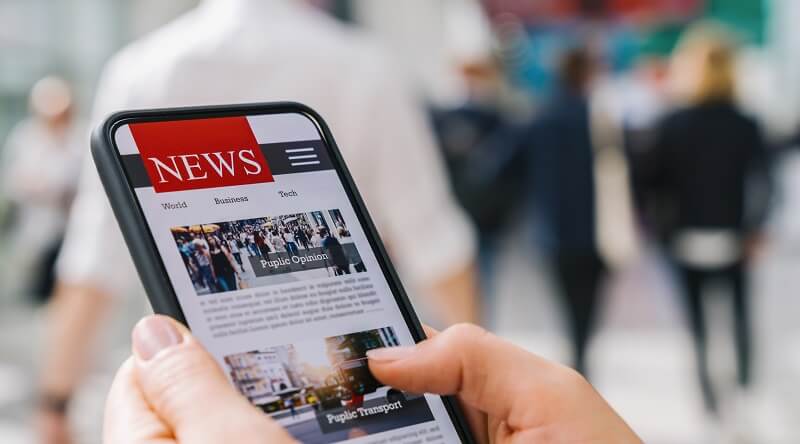5 Easy Facts About Popular News Explained
5 Easy Facts About Popular News Explained
Blog Article
The Definitive Guide to Popular News
Table of ContentsThe Best Guide To Popular NewsGetting The Popular News To WorkPopular News - QuestionsThe 9-Second Trick For Popular News
Age is also an aspect in the method individuals view the function of social networks. More youthful social media information consumers are most likely to claim it has affected their discovering right. Regarding fifty percent of social networks news customers ages 18 to 29 (48%) claim information on social media sites makes them better informed, contrasted with 37% of those 30 to 49, 28% of those 50 to 64, and 27% of those 65 and older.Reporters consider news values when figuring out whether or not to cover an occasion or statement. Arguably the most essential component of newsworthiness is whether or not the information thing being interacted effects a news electrical outlet's audience.
Distance is necessary. Journalists have an interest in points that impact their communities. As an example, study on a state's new tax obligation code likely will not create the exact same rate of interest across state borders. Occasionally specialists can assist localize a bigger national tale that impacts greater than just a city or state. In these situations, it is essential to be in search of possibilities where subject matter specialists can provide understanding or where similar projects might be happening locally.
If you are releasing newsworthy study, loophole in MarComm prior to the short article being released to make sure that the pitch can highlight the latest element of the story: the magazine of the research. Events and announcements that include top-level numbers are most likely to create media insurance coverage. Visits from nationwide numbers usually require months of prep work due to anticipated community passion.
The 9-Second Trick For Popular News
We can aid mitigate potential reputational risk with these tales while additionally increasing the chances of creating insurance coverage. While many of the above news values are intertwined, human passion stories often stand apart.
Human rate of interest components can add information worth to various other tales that may show up to be lacking in the various other worths. The novelty or quirk of a situation can help affect whether or not an information electrical outlet is likely to cover a tale. While this is not an extensive listing, inspecting to see if your information thing or occasion has these top qualities before calling us will assist you establish which elements hold one of the most information value.
The research study discovers that a little over half of all U.S. grownups subscribe to information in some formand roughly fifty percent of those to a paper. And as opposed to the idea that young people will certainly not spend for information because info on the internet is cost-free, virtually 4 in 10 adults under age 35 are paying for news.
There is additionally significant proof that even more customers can begin to pay for news in the futureif authors can comprehend them and serve them well. Half of those that do not spend for information proactively seek news and look like clients in various methods. And almost 2 in 10 of those who don't subscribe to news now suggest they are inclined to begin to pay in the future.
The 5-Minute Rule for Popular News

Individuals are attracted to information as a whole for two reasons over others: A need to be informed citizens (newspaper customers specifically are very motivated by this) and because the publication they sign up for excels at covering particular subjects concerning which those clients particularly care - Popular News. While here are the findings there are a host of reasons, the No
Greater than 4 in 10 likewise mention the truth that family and friends subscribe to the same product. Greater than a third of people say they originally subscribed in reaction to a discount rate or promo. In print, individuals likewise are relocated heavily to sign up for get discount coupons that save them money, something that has untapped implications in digital.

The 30-Second Trick For Popular News
We asked every person who told us they have a normal totally free source of information how most likely they would be to spend for it. More than a quarter (26 percent) claim they would go to least rather likely to start paying for itand 10 percent are really or very most likely. These likely payers tend to be news seekers, and they likewise tend to be people that already spend for a news subscription along with the source they adhere to free of cost.
Of those who do pay, 54 percent subscribe to newspapers in print or electronically, which represents 29 percent of Americans on the whole. The majority of them acquire a print magazine in addition to their newspaper and spend for 2 to four information resources in total, some much more. And while 53 percent are long-time customers (5+ years), greater than a quarter (27 percent) have bought their paper subscription within the past year.

Report this page